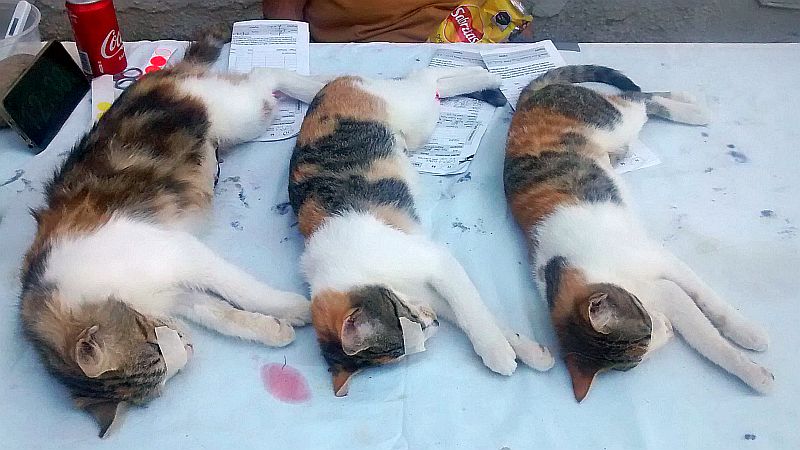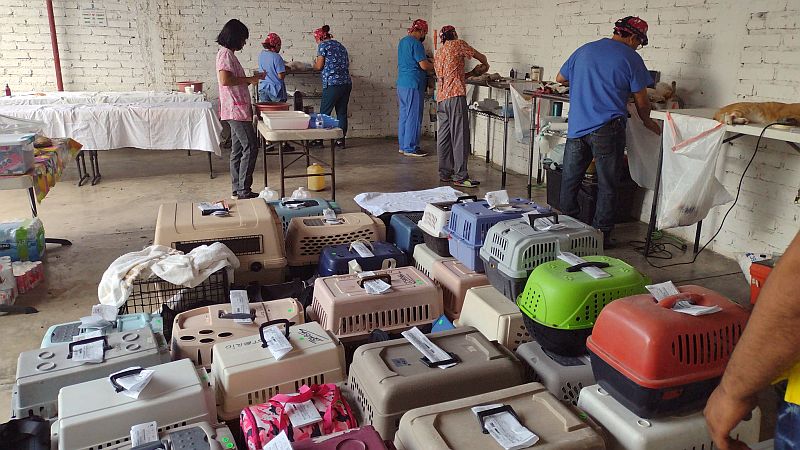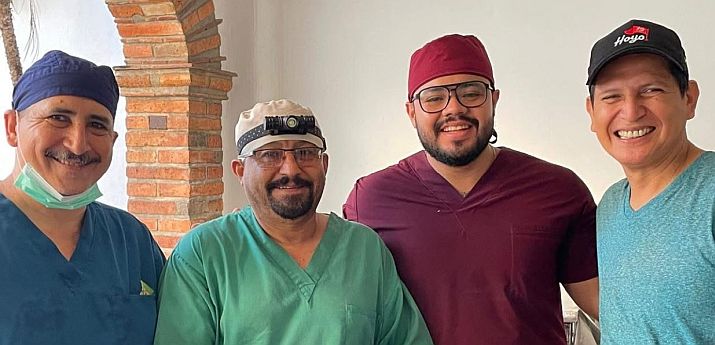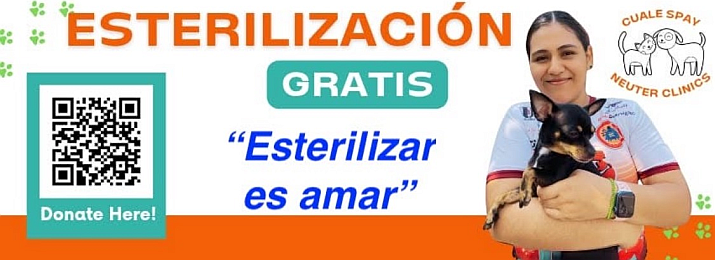
In the vibrant streets of Puerto Vallarta, where the shimmering waters of Banderas Bay meet the rugged Sierra Madre mountains, a quiet movement is making a big difference for animals and the people who care for them.
This is the story of the Cuale Spay and Neuter Clinic, a free community-based place that helps manage the city’s stray animal population. As the only clinic in the area offering assistance for more than two animals per person, they’re providing vital services to the community by being open several Sundays a month to accommodate local workers.
I’ll be running a series of posts where I’ll share more about this grassroots effort in terms of who they are, how they work daily, and the inspiring people behind it. But today, let’s start with why this clinic was founded, what they do, and why it matters.
Stray dogs and cats are everywhere. Many are born on the streets or are abandoned by their owners. Many are sick or injured. All are just trying to survive. Without intervention, a single unspayed female and her offspring can cause a rise by the thousands over just a few years. This overpopulation puts pressure on local resources, spreads disease, and causes unnecessary suffering. And not just for the animals, but for the community trying to help them, too.
Adding to the challenge, some tourists who visit for extended amounts of time take in stray animals but treat them as temporary pets or accessories. Sadly, when they leave, these animals are often abandoned again, perpetuating the cycle of neglect.

The Cuale Spay and Neuter Clinic was set up to break this cycle. By providing free, high-quality spay and neuter surgeries, they aim to stop more animals from suffering needlessly. With a small team and community support, their goal is to create lasting change by improving animal welfare and making neighborhoods healthier and safer.
Sterilization is, without question, one of the most effective ways to control animal overpopulation, as unchecked breeding leads to crowded shelters, health risks, safety concerns like bites or aggression, and economic strain on rescue organizations and municipal services. Yet, it often goes unnoticed when compared to dramatic rescue efforts.
“Since opening the clinic in 2016, we’ve sterilized over 11,000 animals,” states Director Angela Kelleher. “Last year alone, we averaged about 150 surgeries each month, with busier seasons in summer due to more animals being abandoned and an increase in them breeding due to the warmer weather.”
The efforts of all involved with the clinic are making a tangible impact. Neighborhoods with consistent outreach are seeing fewer strays, healthier animals, and area residents are taking more responsibility for their community. The clinic operates on a tight budget, relying heavily on community partnerships, donations, and volunteers.
“Each surgery costs less than $20 USD, and we also trim nails, clean ears, groom, remove ticks and fleas, and apply a free flea/tick preventative,” stresses Kelleher. “100% of donations go to pay the vet, and the few supplies we need are either donated or covered by the small amount of donations we receive from participants.”

As with what one would hope would be the norm with all clinics of this nature, the Cuale Spay and Neuter Clinic consists of local vets, volunteers, rescuers, and community members, all working hand in hand to ensure that animals don’t just get sterilized, but that they also receive care, dignity, and a chance at a better life.
What sets this clinic apart, though, is its focus on community collaboration.
“It’s not just about one organization solving the problem,” Kelleher explains. “We work with a network of ‘animalistas,’ essentially people who trap, rescue, and educate within their neighborhoods. I see our purpose as supporting them. Every day, we are spreading the word, answering questions on Facebook and Messenger, supporting the animalista network, sharing resources, and mentoring individuals who want to step up and help animals in their communities.”
As Kelleher emphasizes, it’s not solely the work of one organization, but a widespread network of passionate individuals dedicated to animal welfare. This collective approach ensures that resources like traps and crates are continually shared, and that more people are empowered to make a difference in their neighborhood.
“Yesterday, a person came by to borrow a trap. Today, I have eight crates being picked up by an animalista who will give them to a lady who’s agreed to sterilize her house full of cats at the clinic. I have another pile of three crates for a couple of young gals helping another person with the homeless animals they feed in the street. These and more items are loaned out again and again. We never stop.”
Over the coming weeks, I’ll take you inside the clinic to follow a typical day. From the early morning check-ins to the final surgeries, you’ll see what it takes to run a high-volume sterilization effort with compassion and care. And you’ll meet the everyday heroes disguised as veterinarians, volunteers, families, and donors, whose collective effort is saving thousands of lives. If you find yourself inspired by what they’re doing, there are plenty of ways to help.

“Every financial donation helps cover surgical supplies and outreach programs,” Kelleher explains. “That’s why consistent funding is vital, so we can continue these services without interruption. But if you can’t afford a donation, that’s okay, too. You can volunteer, foster an animal, adopt, or help raise awareness by sharing our stories.”
Every donation, volunteer effort, or share of their story makes a real difference. Whether it’s a small contribution or a big one, your support helps sustain this vital community effort, allowing more animals to be sterilized and cared for. Sometimes, it just takes vision, heart, and persistence. It may not be flashy, but it’s essential.
To give you a little perspective, at their last big clinic, thirty feral cats had their ears tipped and were released. They also sterilized dozens of puppies and kittens from different litters before they could grow up and add to the cycle. Many animals brought in for surgery are part of ongoing efforts to manage feral populations, as most of these animals won’t find immediate homes. But each sterilization at least helps reduce suffering and prevents more unwanted litters.
The work of the Cuale Spay and Neuter Clinic demonstrates that real change comes from local dedication, community collaboration, and heart. With persistence and teamwork, they’re shaping a future where fewer animals suffer, and compassion is at the center of their community.
They are a quiet but powerful force for good, making a life-saving difference, one sterilization at a time. But perhaps most importantly, they are resounding proof that compassion and dedication can change the world.
If you’d like more information, or you’d like to donate as a means of ensuring the Cuale Spay and Neuter Clinic’s continuation, I invite you to visit their partner website, Paws and Claws PV.




